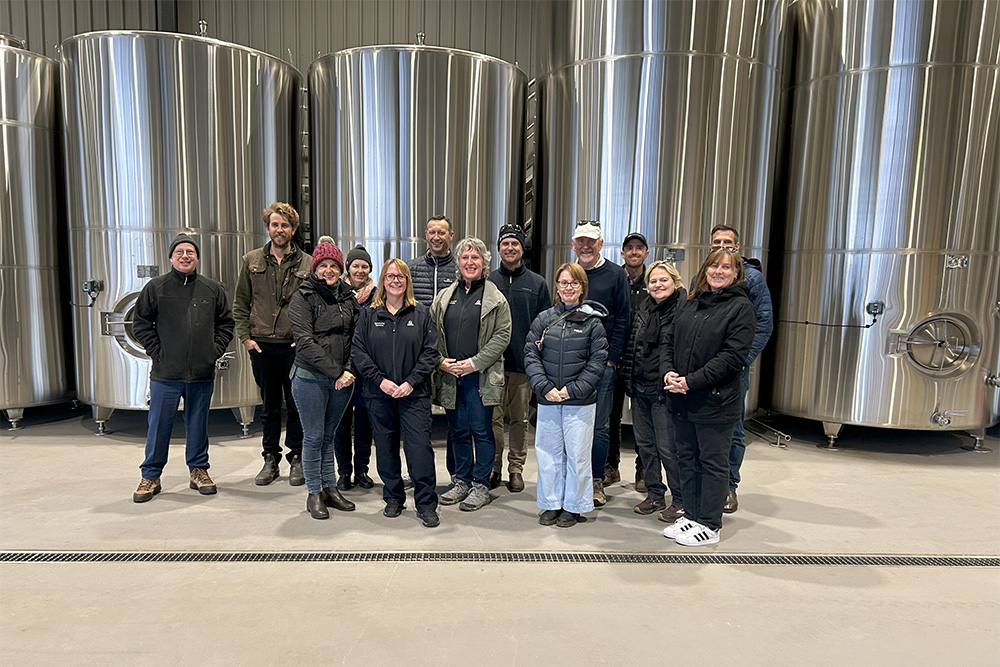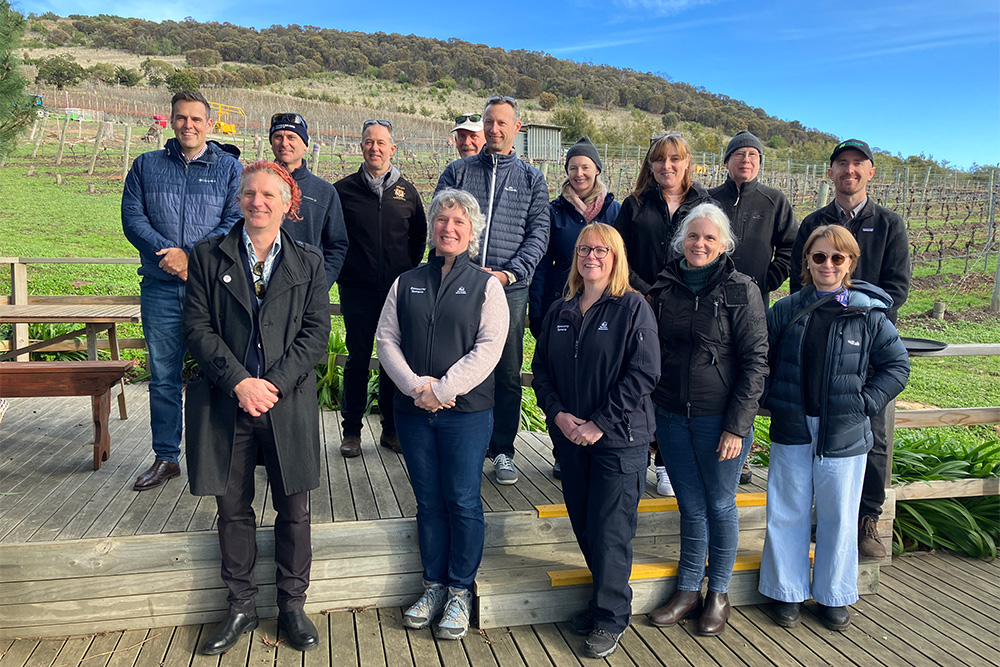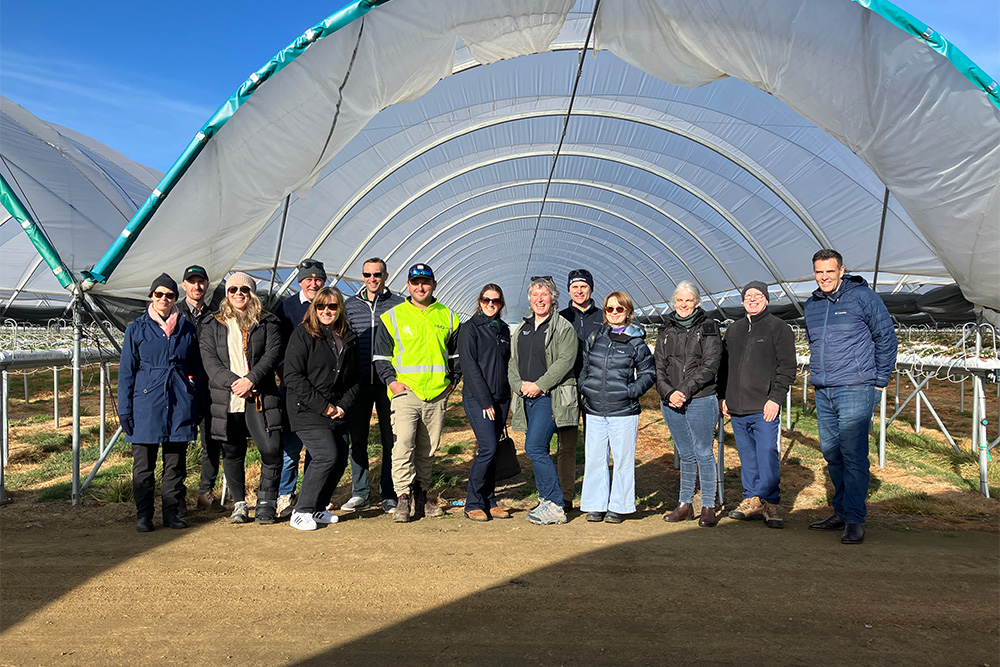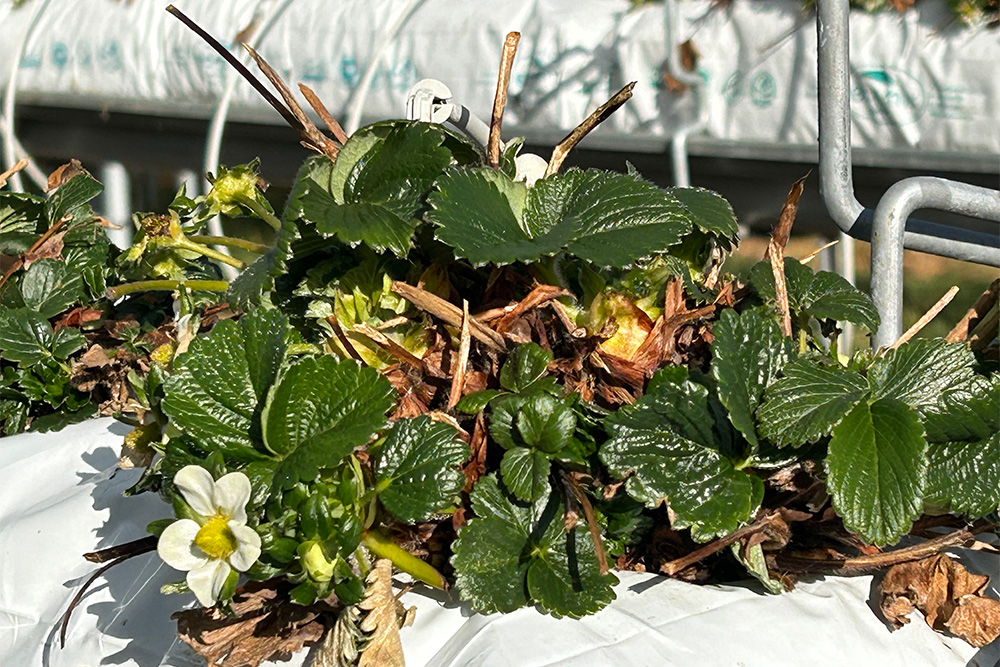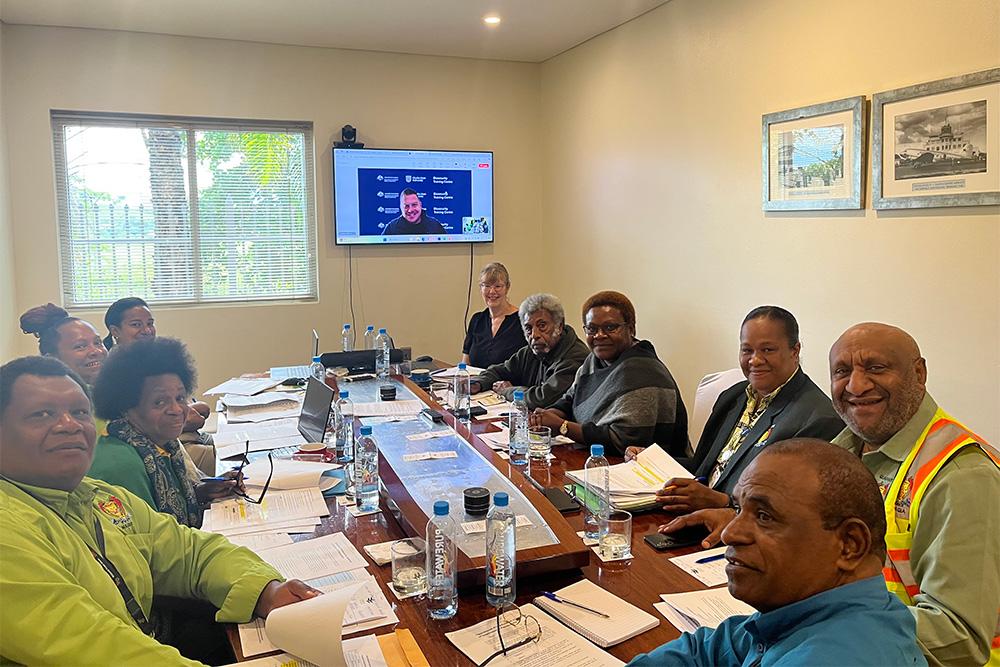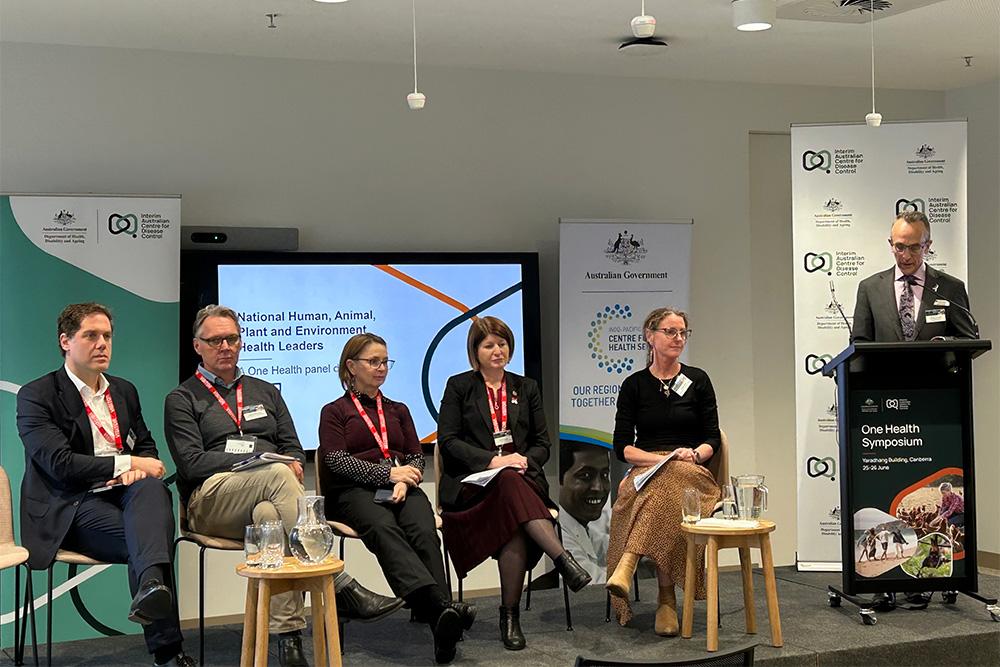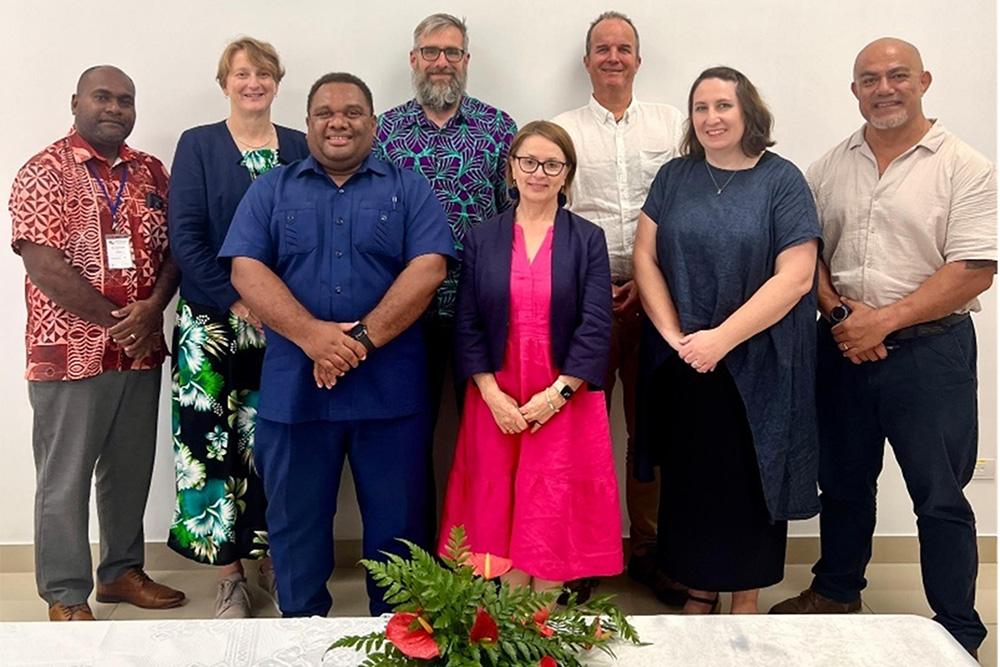A field trip to Tasmanian fruit growing farms and vineyards provided an important opportunity for the Plant Health Committee (PHC) to meet farmers and industry stakeholders to discuss biosecurity challenges whilst exploring effective ways to engage in regulatory discussion.
PHC is the peak government plant biosecurity policy forum, with a focus on improving plant health in Australia in support of the economy, environment and community through strategic policy, technical and regulatory advice and national leadership on plant biosecurity matters.
The farm visits were facilitated by the Department of Natural Resources and Environment Tasmania (NRE-TAS) alongside representatives from Fruit Growers Tasmania and Wine Tasmania, and took place as part of the 67th meeting of the PHC which was held in Hobart in early July.
The field trip incorporated time at Cherries Tasmania Orchards, Pinata Farms which grows strawberries and raspberries, and the vineyards of Pooley Wines and Sisu Wines to discuss some of the biosecurity challenges facing Tasmanian producers. As biosecurity champions, the growers and industry representatives stressed the importance of shared responsibility for biosecurity, and supported consistent, predictable and pragmatic regulatory approaches related to plant pest and disease threats. They explained how it is useful to have clearly defined (and understood) roles and responsibilities when sourcing and/or importing plants and plant material into Tasmania; being vigilant when monitoring plants and produce for signs of plant pests or disease, and when reporting or responding to detections of concern.
Growers highlighted their concerns about ongoing and emerging threats like exotic fruit flies, phylloxera, thrips, powdery mildew, codling moth and various plant viruses. Discussions also focussed on the challenges of managing pests using integrated approaches, and the need for enhanced early detection and containment strategies.
“Industry engagement on biosecurity is very important. Despite the mid-winter chill, it was great to visit a variety of Tasmania’s berry, wine grape and cherry farms with my State and Territory Chief Plant Health Officer colleagues, and hear from growers about the high value they place on good biosecurity systems,” said Dr Gabrielle Vivian-Smith, the Australian Chief Plant Protection Officer.
“The Plant Health Committee came away with many valuable learnings, which will be incorporated into future discussions around plant health issues including sufficient resources for plant biosecurity, eradication programs and traceability of disease infected plant materials.”
